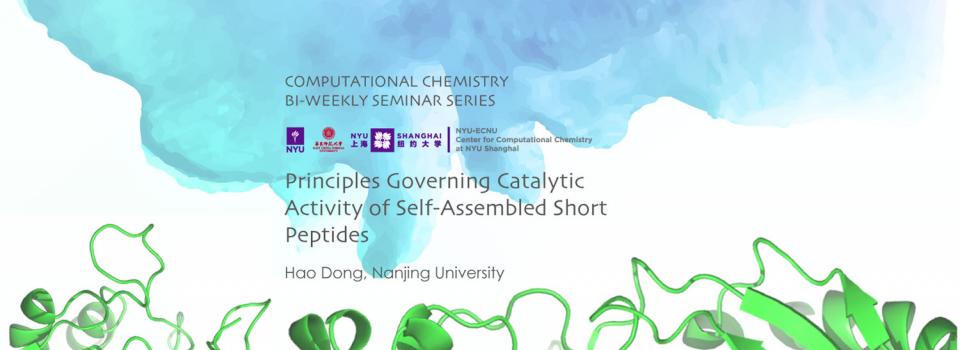
Abstract:
Molecular self-assembly provides a chemical strategy for the synthesis of nanostructures by using the principles of nature, and peptides serve as the promising building block to construct adaptable molecular architectures. Recently, a series of hepta-peptides with alternative hydrophobic and hydrophilic residues were reported to form amyloid-like structures, which were capable of catalyzing acyl ester hydrolysis with remarkable efficiency. However, it remains elusive about the atomic structures of the fibrils: what is the origin of the sequencedependent catalytic activity? How does the ester hydrolysis catalyzed by the fibril? In this work, the atomic structure of the aggregates were determined by using molecular modelling and further validated by solid-state NMR experiments, where the fibril with high activity adopts twisted parallel configuration within each layer, and the one with low activity is in flat antiparallel configuration. The polymorphism originates from the interactions between different regions of the building block peptides, where the delicate balance between rigidity and flexibility plays an important role. We further show that the p-nitrophenylacetate (pNPA) hydrolysis reactions catalyzed by two different fibrils follow similar mechanism, and the difference in microenvironment at the active site between the natural enzyme and the present self-assembled fibrils should accounts for the different catalytic activities. The present work provides atomic understanding of the structure and function of self-assembled fibrils formed with short-peptides, and thus sheds new insight on designing aggregates with better functions.
Biography:
Dr. Hao Dong was born in July 1981, Nanjing, P. R. China. He was educated in the same city, initially at Nanjing University of Science and Technology, and then at Nanjing University, where he studied chemistry and conducted doctoral research with Prof. Shuhua Li. He had 3- years postdoctoral training in Prof. Huan-Xiang Zhou's group at Florida State University, and then moved to Prof. Michael L. Klein's group at Temple University, and worked there for another 3 years. Now he is a chemistry Professor in Kuang Yaming Honors School, Nanjing University. He maintains a steady interest in understanding general questions in both chemical and biological systems by using multi-scale computational methods.
Bi-Weekly Seminar Series by the NYU-ECNU Center for Computational Chemistry at NYU Shanghai


